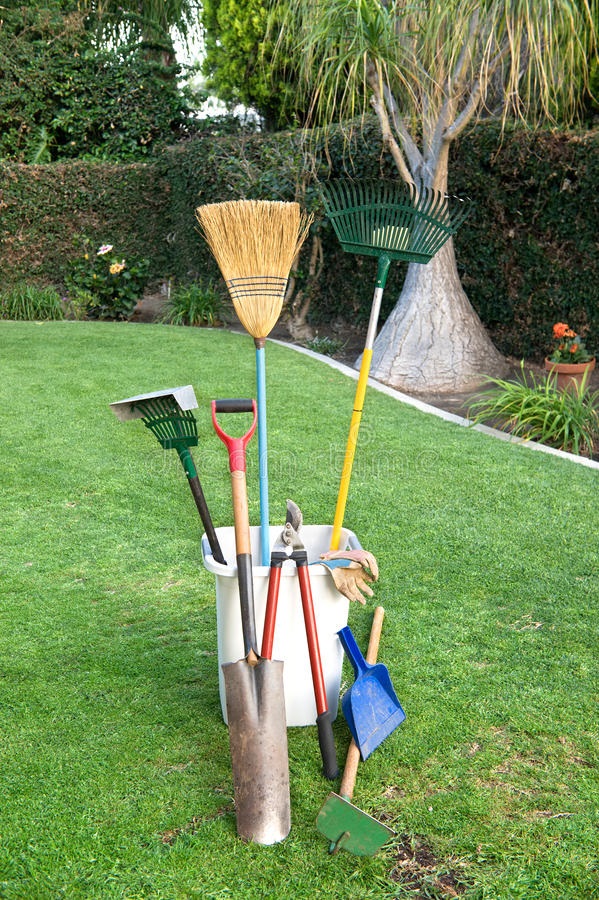January is a good time for gardeners to take stock of their garden tools and accessories, and make sure everything is ready to go for the coming spring gardening season. There are several tools every gardener should have at their disposal to ensure a successful garden. All items described are hand tools, powered only by gardener muscle. Here are several basic garden tools that may help get the job done a little bit easier.

Shovels—A good quality round point shovel is a basic necessity. Unlike the square point shovel that has the end of the blade square to its sides, the round point has a blade that is somewhat rounded, coming to a point at the tip. Used for digging holes for newly purchased trees and shrubs, as well as all types of dirt moving, the round point shovel is invaluable. Also useful is the “sharpshooter” shovel, with a long, narrow blade. These shovels are great for cutting roots that always seem to show up when digging holes anywhere near a tree, or when a smaller, narrow hole is needed. Round point shovels have long handles, while the sharpshooter uses a short “D” handle. Gardeners will find uses for both types of shovels. With either one, buy a shovel with a solid handle, as the handle usually breaks before the blade.
Rakes—There are two types of rakes used in most gardens, the leaf rake, and the garden rake. Leaf rakes are used for raking leaves, grass clippings, and other small debris from your landscape. Today, most leaf rakes are made with plastic tines, but some may have thin metal tines. Metal tines will sometimes bend and become less usable, while plastic tines age and become weak after a few years. Garden rakes however, have an all metal head, 14” to 18” wide, with thick, steel 2” tines spaced about one inch apart along the head. Garden rakes are used for moving small amounts of soil and debris that are too heavy for the leaf rake, as well as for shaping soil into mounds, hills, or rows for planting.
Hoe—A good hoe is the best tool for keeping weeds out of your garden. As with shovels, a heavy, solid handle is best, and a longer handle will give you more leverage while removing weeds. Your hoe will benefit from being sharpened regularly, making the tool cut through the soil easily.
Garden Fork—A garden fork is essential for turning the soil and breaking up dirt clods and clumps, and preparing areas for new plantings. Capable of digging down and turning soil 4-6” deep, it could be called a manual tiller. Garden forks usually have 4, 10”-12” tines and a shorter, “D” shaped handle on the end. When purchasing, look for thick steel tines, preferably triangular in shape, instead of flat tines. Flat tines will bend in heavy soils, and once bent, they will always be weak and subject to bending again, making the tool unusable. Triangular tines will bend also, but much more force is required.
Cutters and Loppers—A good pair of cutters and loppers make trimming and pruning much easier. Hand cutters with bypass blades are very useful for small pruning jobs, such as deadheading spent flowers, removing broken/undesirable shoots, and harvesting some vegetables. Bypass cutters have two blades that operate like a pair of scissors, sliding to the side of each other. Loppers are a larger version of bypass cutters, having handles 18” or longer. Loppers are designed for heavier cuts, and depending on the handle length, can cut branches up to 2 inches thick.
And no garden list would be complete without mentioning gloves. A good pair of garden gloves keep the “ouchies” to a minimum, protecting your valuable hands from all kinds of thorns, stickers, insects, and other things in and about the soil. Look for a pair with a protective surface (rubber or plastic) for your palms, and a cloth back for quick drying. There are many types of garden gloves, so take your time when shopping and buy a pair you like. And like gloves, always buy quality tools that fit your needs and budget. Happy gardening!!
For more information go online to Texas A&M Agrilife Extension Service.







